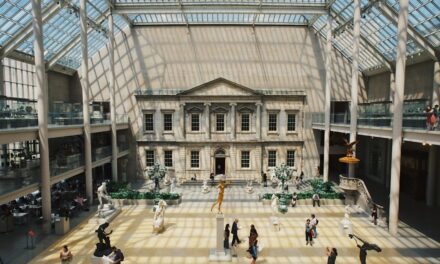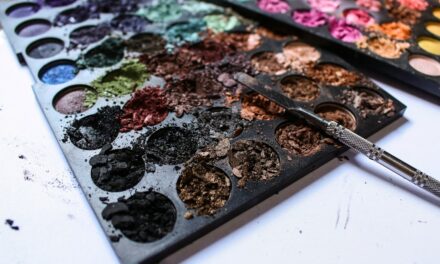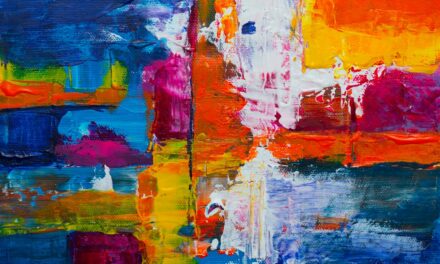Mixed media artwork is a captivating genre that transcends traditional boundaries, allowing artists to explore a myriad of materials and techniques. At its core, mixed media combines various artistic mediums—such as painting, drawing, collage, and photography—into a single cohesive piece. This approach not only enriches the visual experience but also invites deeper engagement from the viewer, as they navigate the layers of meaning and texture embedded within the work.
The beauty of mixed media lies in its versatility; artists can draw from an extensive palette of materials, including paper, fabric, found objects, and digital elements, to create unique expressions of their vision. The history of mixed media can be traced back to the early 20th century, with movements such as Dadaism and Surrealism paving the way for innovative artistic experimentation. Artists like Pablo Picasso and Kurt Schwitters began to incorporate everyday objects into their works, challenging conventional notions of art and encouraging a dialogue between the ordinary and the extraordinary.
Today, mixed media continues to evolve, with contemporary artists pushing the boundaries even further by integrating technology and interactive elements. This dynamic form of expression not only reflects the complexities of modern life but also allows for a more personal connection between the artist and the audience.
Summary
- Mixed media artwork involves using a variety of materials such as photographs, paper, fabric, and paint to create a unique piece of art.
- When choosing photographs for mixed media artwork, select images with strong composition, interesting textures, and meaningful subject matter.
- Prepare photographs for incorporation by resizing, cropping, and enhancing them to fit the overall composition of the artwork.
- Techniques for incorporating photographs into mixed media artwork include layering, collage, and transfer methods to seamlessly blend them with other materials.
- Adding texture and dimension to photographs can be achieved through techniques such as embossing, stamping, and adding embellishments to create visual interest.
Choosing the Right Photographs
Emotional Resonance and Thematic Relevance
When choosing photographs, artists should consider both the emotional resonance and thematic relevance of the images. Personal photographs can evoke nostalgia or intimacy, while found images may introduce broader cultural or historical narratives. The key is to select photographs that align with the intended message of the artwork, enhancing its depth and meaning.
Aesthetic Qualities to Consider
In addition to thematic considerations, the aesthetic qualities of the photographs should also be taken into account. Factors such as colour palette, composition, and texture play a significant role in how well a photograph will blend with other materials in the artwork. For instance, a vibrant, high-contrast image may stand out dramatically against a muted background, while a softer, monochromatic photograph might harmonise beautifully with textured layers of paint or paper.
Creating a Unified Visual Language
Ultimately, the chosen photographs should not only complement one another but also contribute to a unified visual language that speaks to the viewer.
Preparing the Photographs for Incorporation
Once the photographs have been selected, preparing them for incorporation into a mixed media piece is essential for achieving a polished final result. This preparation process may involve resizing, cropping, or altering the images digitally to ensure they fit seamlessly within the overall composition. Artists can utilise software such as Adobe Photoshop or GIMP to make adjustments that enhance the photographs’ visual impact.
Additionally, experimenting with filters or effects can add an artistic flair that aligns with the desired aesthetic of the artwork. Physical preparation is equally important; artists should consider printing their photographs on various substrates to achieve different textures and finishes. For instance, printing on textured paper can add depth and interest, while glossy finishes may create a striking contrast against matte surfaces.
Furthermore, artists should ensure that their photographs are properly adhered to the chosen base material—be it canvas, wood panel, or paper—using appropriate adhesives that will not damage the images over time. Taking these preparatory steps will not only enhance the visual quality of the artwork but also ensure its longevity.
Techniques for Incorporating Photographs
Incorporating photographs into mixed media artwork can be achieved through various techniques that enhance both visual interest and narrative depth.
This technique allows artists to juxtapose different elements, encouraging viewers to explore connections between disparate images and materials.
Collage can also introduce an element of surprise, as unexpected combinations often lead to new interpretations and meanings. Another effective technique is transfer printing, which involves transferring an image from one surface to another using mediums such as gel medium or solvent. This method can create a more integrated appearance by allowing photographs to blend seamlessly with painted or textured backgrounds.
Artists can experiment with different transfer methods—such as using heat or moisture—to achieve varied effects, from soft impressions to sharp details. By employing these techniques thoughtfully, artists can create visually compelling works that invite viewers to engage with both the photographs and the surrounding materials.
Adding Texture and Dimension to Photographs
Texture and dimension are vital components in mixed media artwork that can elevate a piece from flat imagery to a multi-layered experience. Artists can achieve texture through various means, such as incorporating three-dimensional elements like fabric, wood, or found objects alongside photographs. These materials can create physical depth within the artwork, drawing viewers in and encouraging them to explore its intricacies.
Additionally, artists can manipulate surface texture through techniques such as layering paint or applying mediums like modelling paste or gel medium over photographs. This not only adds tactile quality but also creates visual interest by altering how light interacts with different surfaces. For instance, a glossy photograph juxtaposed against a rough-textured background can create striking contrasts that enhance the overall composition.
By thoughtfully integrating texture and dimension into their work, artists can create immersive experiences that resonate on both visual and emotional levels.
Blending Photographs with Other Materials
The art of blending photographs with other materials is where mixed media truly shines. This process involves harmonising various elements—such as paint, paper, fabric, and found objects—with photographs to create a cohesive narrative. One effective approach is to use colour theory; selecting materials that complement or contrast with the colours in the photographs can enhance visual harmony and draw attention to specific areas within the artwork.
Moreover, artists can experiment with layering techniques to create depth and complexity in their compositions. For example, placing transparent layers of paint over photographs can soften their edges and integrate them more fully into the surrounding environment. Similarly, incorporating patterned papers or textiles can introduce new visual rhythms that interact with photographic imagery in unexpected ways.
The key is to maintain a balance between the photographic elements and other materials so that each component contributes meaningfully to the overall composition without overwhelming one another.
Creating a Cohesive Composition
Achieving a cohesive composition in mixed media artwork requires careful consideration of balance, harmony, and focal points. Artists should strive for a sense of unity among all elements within the piece—this includes photographs, textures, colours, and shapes. One effective strategy is to establish a clear focal point that draws viewers’ attention while ensuring that other elements support this central theme without competing for dominance.
To create balance within the composition, artists can employ principles such as symmetry or asymmetry depending on their desired effect. Symmetrical compositions often evoke feelings of stability and order, while asymmetrical arrangements can convey dynamism and movement. Additionally, artists should consider how negative space—the areas around and between elements—can contribute to overall harmony by providing breathing room for the eye to rest.
By thoughtfully arranging all components within the artwork, artists can create a visually engaging experience that invites viewers to explore its layers.
Finishing and Protecting the Artwork
The final stages of creating mixed media artwork involve finishing touches that enhance both its aesthetic appeal and durability. Artists may choose to apply varnishes or sealants to protect their work from environmental factors such as moisture or UV light. These protective coatings not only preserve colours but also add an additional layer of texture or sheen that can elevate the overall appearance of the piece.
In addition to protective measures, artists should consider how they will present their finished work. Framing options can significantly impact how an artwork is perceived; choosing a frame that complements the piece while providing adequate support is essential for longevity. Furthermore, artists may wish to document their process through photography or written descriptions to share their journey with others—this not only adds context but also enriches viewers’ understanding of the artwork’s creation.
By taking these final steps seriously, artists ensure that their mixed media creations are not only visually striking but also enduring pieces of art that resonate with audiences for years to come.
Incorporating photographs into mixed media artwork can add a unique and personal touch to your creations.
For more inspiration on how to incorporate photographs into your mixed media art, check out this article on Colours of Expression. This article explores the use of colour in art and how it can be used to convey different emotions and messages within a piece.



